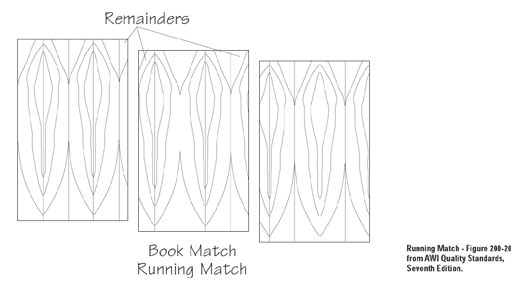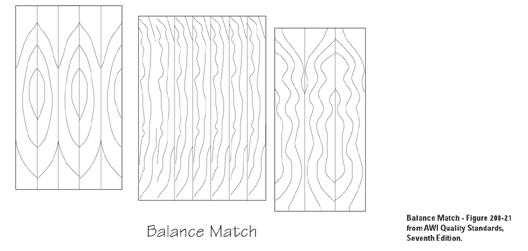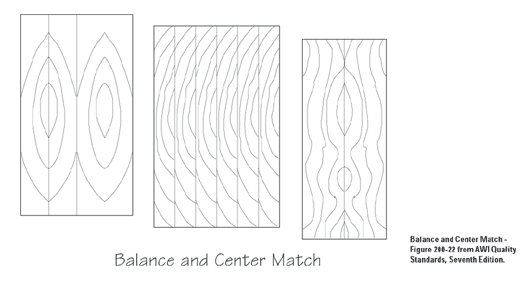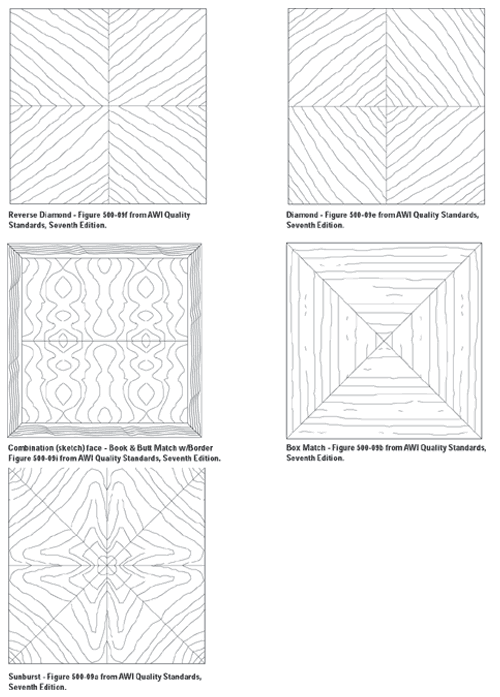 |
 |
|||||||
Matching Within A Face |
|
|
The individual leaves of veneer in a sliced flitch increase or decrease in width as the slicing progresses. Thus, if a number of panels are manufactured from a particular flitch, the number of veneer leaves per panel face will change as the flitch is utilized. The manner in which these leaves are "laid up" within the panel can be classified as follows: |
|
|
o Running Match: In a Running Match each panel face is assembled from as many veneer leaves as necessary so that the widths and number of matching veneer leaves are not requirements. This can produce a match which appears less even or random and asymmetrical. Running matches are seldom "sequenced and numbered" for use as adjacent panels. Horizontal grain "match" or sequence cannot be expected. |
|
 |
|
o Balance Match: In a Balance Match the width of each veneer leaf in a panel face is the same. Panels may contain an even or odd number of leaves, and distribution may change from panel to panel within a sequenced set. |
|
|
|
|
| o Center Balance Match: In a Center Balance Match an even number of equal width veneer leaves makes up the panel face. This produces horizontal symmetry. A small amount of figure is lost in the process. |
|
|
|
|
|
o Special Matches: Special matches can include names such as box, diamond, basket weave, sunburst and reverse diamond, reverse box and checkerboard match. Because there are no standardized names for these matches, it is strongly recommended that the design professional include both names and drawings for the match to be sure the desired match is achieved. o Matching of Sketch Faces: In this procedure the layout of veneer follows a sketch or design. These include inlays of various woods, borders, frames, imitations of stiles and rails and curved inlay shapes. The design professional should work closely with the woodworker and veneer supplier to make sure design intentions are realized. |
|
Sketch Faces and Special Matches |
|


